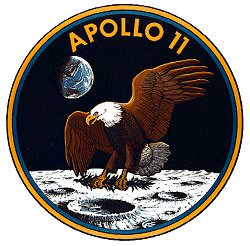Here’s a look at Apollo 11 for those with short attention spans. In just 100 seconds you can see the highlights of one of the most extraordinary voyages in human history. “Even short 1-second shots can reveal an incredible amount of information,” says Spacecraft Films, the company that has produced tons of great videos/DVDs of our explorations of space.
If you’re into getting more detail, below is an incredibly slow and in-depth look at the launch of the 4th flight of the Saturn I rocket, which took place 50 years ago today. This is also from Spacecraft Films.


Minor nit – In the second video the narrator says that the retro rockets were pointed down toward the ground…. whereas actually you can see they are obviously pointed upwards, which makes sense if you’d want to separate the first stage from later stages….
Well… it seems to me that is a definitional question. In other words, in which direction is a rocket “pointed”?
For example, is the Saturn I rocket itself “pointed” toward the sky, or toward the ground? A reasonable argument is that it is pointed toward the sky, because that is the direction in which it is moving. That would mean the retrorockets pointed in the opposite direction are “pointed” toward the ground.
I was speaking of “pointed” as the direction of thrust. I should have been more specific. The important idea is that the thrust is directed counter to the direction of flight, to decelerate the stage during separation.
Interesting to know is that only the outer F1 engines could gimbal.
And something that I did not realize for many years, the command module is surrounded by a heat shield. It is not only the bottom. And it is basically a honey comb that they filled hole by hole by hand. They then x-rayed it to see of they missed a hole.
It would be interesting to have an article that goes of the beaten part of the Apollo and goes into some details about the rockets and CM/LM.
How many people know how the Apollo RCS worked? Do they realize that the inside of the RCS nozzel has ablative material and it basically burns itself up every time a RCS thruster worked?
Or how many people know that the SM big engine could gimbal?
Another thing people don’t know is that the CM is structured in such a way that the centre of gravity is not in its centre. This way you can move the CM up and down in the atmosphere by simple RCS thruster rotating it.
There are so many cool details about the Apollo but almost no article talks about it. they stay on the path that 100s of articles already discussed.